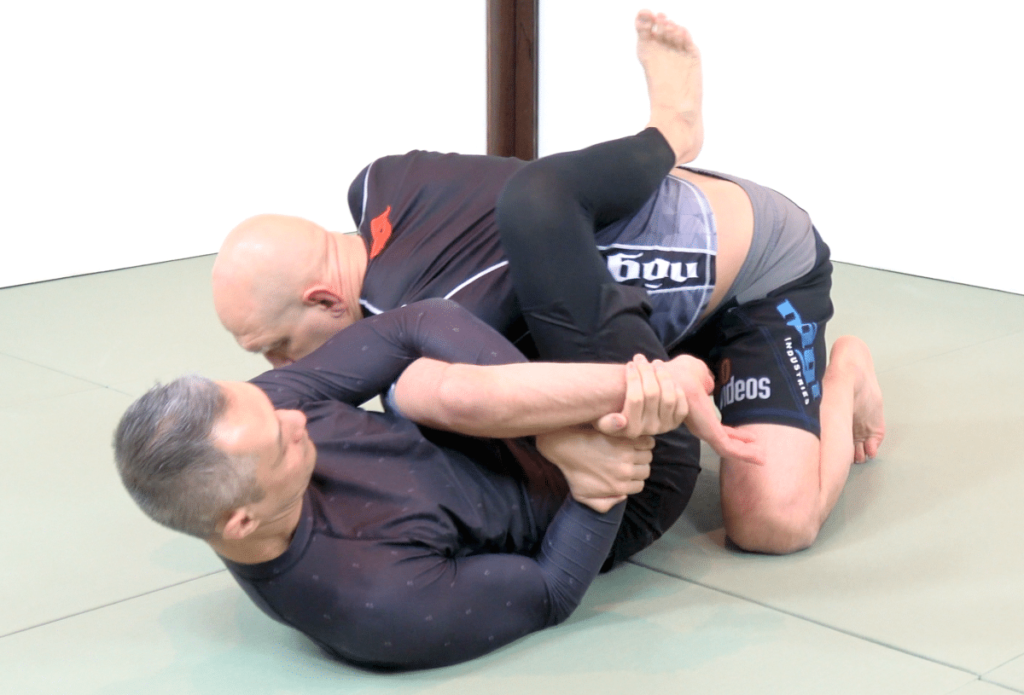The kimura is a submission that can be executed from many different positions in Brazilian Jiu-Jitsu (BJJ), including closed guard. It is a versatile submission that can be used to attack both the shoulder and the elbow joint, making it a valuable technique to have in your arsenal. In this article, we will explore the fundamentals of the kimura from closed guard and provide some tips to help you improve your execution.
Understanding the Kimura Grip from Closed Guard:
The kimura grip involves grabbing your opponent’s wrist with one hand and wrapping your other arm around their arm, grabbing your own wrist. This grip creates a powerful lever that allows you to manipulate your opponent’s arm and put pressure on their shoulder and elbow joints. In closed guard, the kimura grip can be achieved by using an overhook on your opponent’s arm.
Setting Up the Kimura from Closed Guard:
To set up the kimura from closed guard, you need to control your opponent’s posture and break their grip. You can do this by pulling your opponent down towards you and breaking their grip by extending your hips and pushing their hands away from you. Once you have broken their grip, you can secure the kimura grip by placing an overhook on their arm.
Executing the Kimura from Closed Guard:
To execute the kimura from closed guard, you need to isolate your opponent’s arm and bring it across your body. You can do this by using your legs to break their posture and pulling their arm towards your hip. Once you have their arm in position, you can lock up the kimura grip by grabbing your own wrist. From here, you can finish the submission by lifting your hips and rotating your opponent’s arm.
Common Mistakes to Avoid:
One common mistake when executing the kimura from closed guard is not controlling your opponent’s posture. If your opponent can posture up, it will be much more difficult to isolate their arm and secure the kimura grip. Another mistake is not breaking their grip before attempting the submission. If your opponent has a strong grip, it will be difficult to secure the kimura grip.
Kimura to Sweep:
Another option when you have the kimura grip from closed guard is to use it to sweep your opponent. To do this, you need to shift your weight towards the side of the kimura grip and use your legs to push your opponent off-balance. This will create an opportunity for you to come up on top and attack from a dominant position.
Drilling the Kimura from Closed Guard:
To improve your kimura from closed guard, it is important to drill the technique regularly. You can do this by drilling the setup, the execution, and the sweep from the kimura grip. It is also helpful to practice the kimura grip from other positions in BJJ, such as the top position or side control.
The kimura from closed guard is a versatile submission that can be used to attack both the shoulder and elbow joints. By understanding the grip, setting up the submission, and executing the technique properly, you can use the kimura to finish matches and gain dominant positions. With regular drilling and practice, you can make the kimura from closed guard a potent weapon in your BJJ arsenal.
Hey there! Just a heads up that some of the links in this post are affiliate links, which means that if you click on them and make a purchase, I may earn a commission. But don’t worry, it won’t cost you anything extra – in fact, you might even get a sweet deal! Plus, every purchase made through one of these links helps support my blog and keep the content coming. So, if you do decide to make a purchase, thank you so much for your support – it means the world to me!
All the best,
Will








Pingback: Escape Artist: 6 Techniques to Escape from Common Submissions in BJJ – Jiu Jitsu Hub
Pingback: 6 Essential Submissions from Closed Guard in Brazilian Jiu-Jitsu – Jiu Jitsu Hub